Finding Value in Declining Commodity Prices
I’m going to begin with a bit of good news. Below is our China Region Fund (USCOX). As you can see, not only has it broken above its 50- and 200-day moving averages, but it’s also trading at four-year highs. And since this chart was created early last week, the fund has climbed even higher, to $9.53 as of this writing.
As I mentioned last week, USCOX has benefited from the continued rally in the Shanghai Composite Index through our holdings in the Morgan Stanley China A Share Fund and a closed-end fund. The Shanghai Composite is up 87 percent year-over-year and is currently at a seven-year high.
So what’s the deal with Chinese equities right now? After all, China’s economic growth for the first quarter of the year cooled to a six-year low of 7 percent.
The market surge is mostly attributable to monetary easing and government policy changes such as housing stimulus and modernization of the country’s financial structure. But there’s more at work.
Saving Big on Commodities Slump
Also contributing to the bull run is the plunge in commodity prices since last June, brought on by both the strong U.S. dollar and a slowing global economy.
Such market conditions have obviously been a challenge for those involved in the production of raw materials and natural resources. But they’ve been a windfall for net-import countries, China included. Most of the beneficiaries are Asian and Eastern European nations—excluding Russia, whose economy largely depends on revenue generated from oil exports.
Besides Russia, the biggest losers have been Latin American countries, huge exporters of some of the hardest-hit resources—crude oil, sugar, soybeans and coffee.
As the world’s largest importer of natural resources, China saves an estimated $600 million a day on its oil import bill. That’s a staggering $200 billion a year. Low oil prices, in fact, should help boost GDP growth in the entire Asia-Pacific region between 0.25 and 0.5 percent, according to Rajiv Biswas, economist at consulting firm IHS Inc.
Low oil prices are also helping many businesses and companies such as American Airlines keep more capital in their coffers. For every $1 change in oil, American saves about $105 million per month in jet fuel costs, according to airline research analyst Helane Becker of financial services firm Cowen Group.
Amazingly enough, precious metals are the best-performing commodities sub-sector so far this year, having collectively lost 2.5 percent.
Of the 29 resources featured in the chart above, only red meat is in the black.
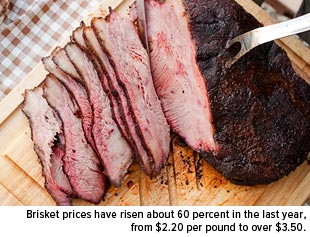 |
Whereas many of these commodities are facing oversupply issues, the cattle industry as well as barbeque purveyors are currently struggling with a brisket shortage, which have driven the wholesale price of the popular cut of meat up 60 percent from last year. Several barbeque joints here in San Antonio, in fact, have fallen victim this year to what the media are calling “the brisket bandit,” who’s made off with thousands of dollars’ worth of meat, both raw and smoked.
Platinum and palladium are fundamentally undervalued right now, and demand for both metals is expected to pick up this year. Low prices should spur platinum jewelry demand in China, while an increase in automobile sales in the U.S., eurozone and China should help palladium. (Palladium is used in the production of catalytic converters.)
The Start of Mergers and Acquisitions
The challenging crude oil environment has prompted the first of what will likely be a new wave of oil and gas company mergers and acquisitions (M&As) similar to what we last saw in the late 1990s. If you recall, Exxon merged with Mobil in an $80-billion deal, BP tied the knot with Amoco and Chevron bought Texaco.
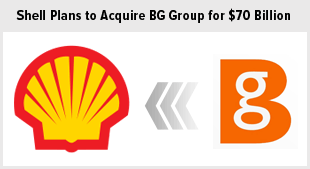 |
The current cycle kicked off last November when titan Halliburton agreed to purchase Baker Hughes for $35 billion.
Now, for double that price in cash and stock, Royal Dutch Shell plans to gobble up UK-based BG Group in the biggest deal since the Exxon-Mobil merger. The combined companies will become the world’s largest producer of liquefied natural gas (LNG). Shell’s oil and gas reserves will grow 25 percent and give the company huge exposure to proven oilfields in Australia and Brazil. As is normally the case, the company being acquired sees a spike in share price, and BG is no exception; this week alone, its stock has risen more than 30 percent.
It’s doubtful we’ll see a deal this round as massive as Exxon-Mobil, but we expect more to occur among the junior to mid-tier producers and explorers.
Remembering Paul Reynolds
I was in Toronto celebrating the life of my friend Paul Reynolds, premier broker in the resource world and former president and CEO of Canaccord Genuity, Canada’s largest independent investment bank. He passed away in Hawaii last Thursday following his competition in the Lavaman Waikoloa triathlon. He was 52.
 |
Paul was an early pioneer in the London Alternative Investment Market (AIM), which was a very successful platform for the creation of new companies, especially those involved in natural resources. During his tenure as chief executive, he turned Canaccord into a global operation through his balance of collaboration and competition. Besides being a highly-respected and transformative brokerage executive, my friend had an infectious zest for life. He was a seasoned participant in Olympic-length triathlons and other physically-demanding competitions.
Paul is survived by his wife, four children, and a large, tightknit extended family. They, along with his abundance of friends and colleagues, will remember the profound impact of his larger than life charisma and big heart. Paul will be deeply missed.
Please consider carefully a fund’s investment objectives, risks, charges and expenses. For this and other important information, obtain a fund prospectus by visiting www.usfunds.com or by calling 1-800-US-FUNDS (1-800-873-8637). Read it carefully before investing. Distributed by U.S. Global Brokerage, Inc.
| One-Year | Five-Year | Ten-Year | Gross Expense Ratio |
Expense Cap |
|
| China Region Fund | 6.63% | 0.52% | 5.14% | 2.77% | 2.55% |
Expense ratios as stated in the most recent prospectus. The expense cap is a voluntary limit on total fund operating expenses (exclusive of any acquired fund fees and expenses, performance fees, taxes, brokerage commissions and interest) that U.S. Global Investors, Inc. can modify or terminate at any time, which may lower a fund’s yield or return. Performance data quoted above is historical. Past performance is no guarantee of future results. Results reflect the reinvestment of dividends and other earnings. For a portion of periods, the fund had expense limitations, without which returns would have been lower. Current performance may be higher or lower than the performance data quoted. The principal value and investment return of an investment will fluctuate so that your shares, when redeemed, may be worth more or less than their original cost. Performance does not include the effect of any direct fees described in the fund’s prospectus which, if applicable, would lower your total returns. Performance quoted for periods of one year or less is cumulative and not annualized. Obtain performance data current to the most recent month-end at www.usfunds.com or 1-800-US-FUNDS.
Foreign and emerging market investing involves special risks such as currency fluctuation and less public disclosure, as well as economic and political risk. By investing in a specific geographic region, a regional fund’s returns and share price may be more volatile than those of a less concentrated portfolio.
The Shanghai Composite Index (SSE) is an index of all stocks that trade on the Shanghai Stock Exchange.
Fund portfolios are actively managed, and holdings may change daily. Holdings are reported as of the most recent quarter-end. Holdings in the China Region Fund as a percentage of net assets as of 3/31/2015: American Airlines 0.00%, Baker Hughes 0.00%, BG Group 0.00%, BP PLC 0.00%, Canaccord Genuity Group Inc. 0.00%, Chevron Corp. 0.00%, Exxon Mobil Corp. 0.00%, Halliburton 0.00%, IHS Inc. 0.00%, Morgan Stanley China A Share Fund 0.00%, Royal Dutch Shell PLC 0.00%.
All opinions expressed and data provided are subject to change without notice. Some of these opinions may not be appropriate to every investor.
{{ commodity.name }}
{{ post.title }}
{{ post.date }}

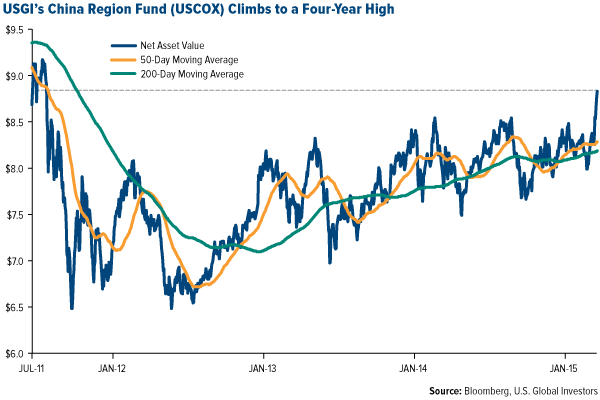
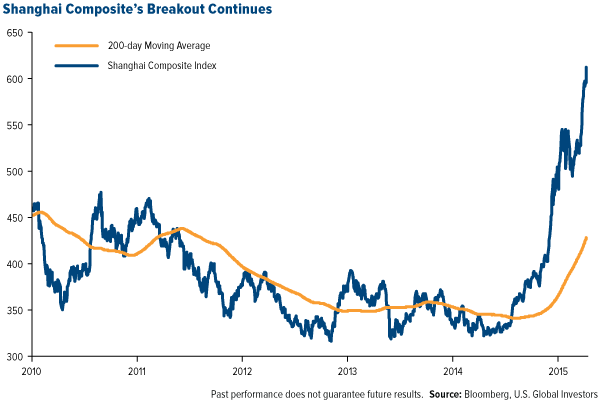
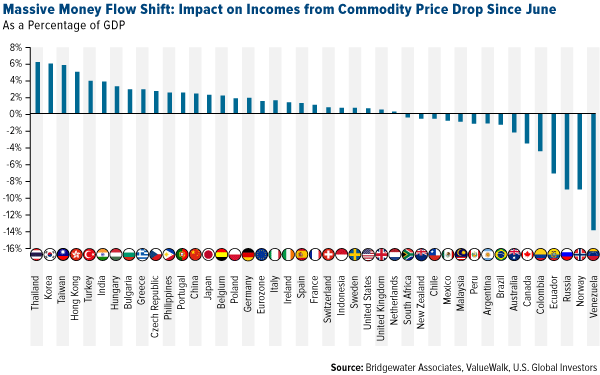
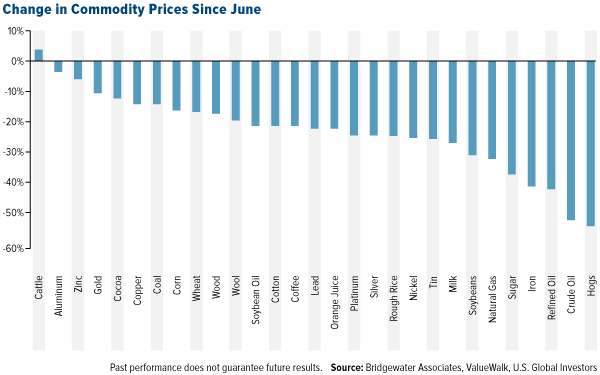


Comments